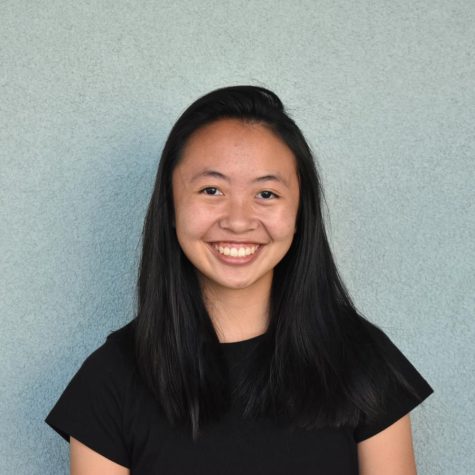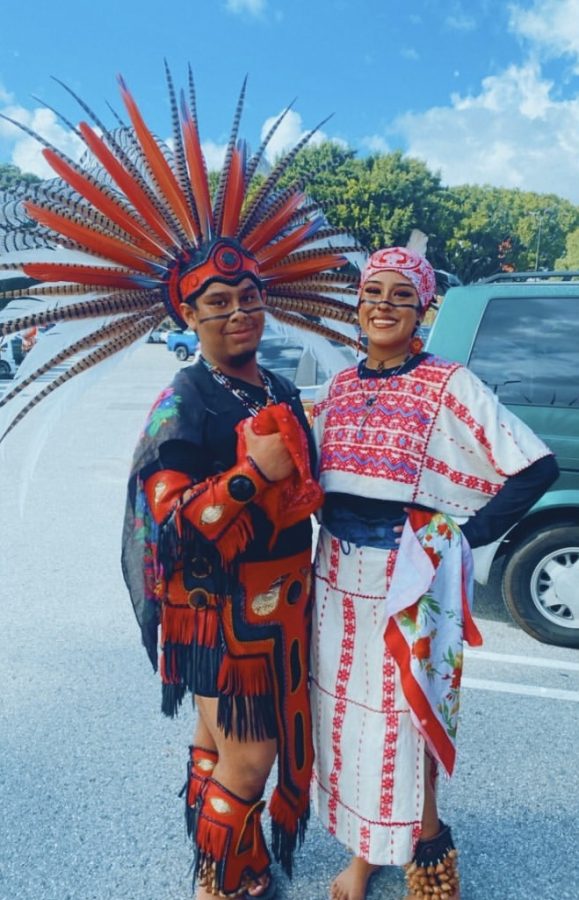Junior Jose Morales honors indigenous culture through traditional dances, symbolic adornments
Six-year-old junior Jose Morales was looking for toys to play with when he instead found “coatlicue,” a collection of his grandfather’s indigenous artifacts. Since then, he has learned more about his ancestral history, the traditions and the culture of the Totonaca, an indigenous group from Veracruz, Mexico.
Morales’ grandfather has played a crucial role in introducing him to the indigenous community. “I’m glad that my grandfather introduced the culture to me because now I see life differently,” he said. “I feel that if I didn’t have those teachings from him, I wouldn’t be the person I am today because his words of wisdom took me to another level of accepting what death is. I learned to appreciate who I am, who I can become and whom I can offer that same energy to.”
As an indigenous, you’re representing your legacy. You’re representing your ancestors because at one point, they couldn’t historically.
— Junior Jose Morales
In one word, Morales described the indigenous community as a family. “We’re not biologically related, but it’s the form of ‘tequio’ (‘trabajo communal’ in Nahuatl), which is communal work where we gather together to share our love, energy and culture,” he said. “We’re all united.”
Being a part of the indigenous community also comes with a lot of responsibility. “As an indigenous, you’re representing your legacy,” Morales said. “You’re representing your ancestors because at one point, they couldn’t historically.”
In addition to the responsibilities that come with being indigenous, Morales is faced with cultural appropriation. For example, Morales wears macaw feathers because they resonate with him, but he has seen nonindigenous people wear them unknowingly. “Macaw feathers are colorful,” he said. “I’m pretty colorful, but I’m also natural. I only use natural colored feathers, but a lot of people will dye chicken feathers to make it seem like they’re part of something that they’re not.”
Seeing people disrespect his culture leaves Morales feeling disheartened. “I feel that I have failed the dreams that my ancestors had intended for me,” he said. “They wanted me to preserve the culture, but that can’t happen if people are just trying to copy how it’s done.”
As an indigenous person, Morales also recognizes the stereotypes that come with his identity. “As someone who is darker-skinned, my skin color plays a huge component in being indigenous,” he said. “We’re considered ‘savages and animals,’ in terms of colonizers or Spaniards. In some terms, I’m representing those stereotypes. But instead of taking the negativity, I’m taking the positive out of it. I’m proud of it.”
Morales wears jewelry such as jade and jaguar necklaces, which contain medicine, as part of his indigenous culture. “At school, at work and in public, I always carry around my medicine,” he said. “The medicine is not something physical, but it’s my energy that I place within my jewelry.” Animals such as hawks, deer and jaguars are symbols of his ancestors and indigenous community. “Sometimes just walking to school, I see those animals, which takes me to another level of feeling more centered,” Morales said. “Deep down, either my ancestors, my creator or even just a certain energy is protecting me. I know who is going to be there even if I’m not 100% ready to start the day.”
Morales’ grandfather introduced him to traditional indigenous dancing at a time when he didn’t have a connection to the community. Aztec dancing became an important aspect of his life two years ago when he joined Calpulli Tonalehqueh, a dance group that performs at ceremonies throughout California. “Dancing centers me,” he said. “It reminds me how precious and sacred I am but also honors my body and limits.” His dance costume consists of a long fancy headdress (“copilli” in Nahuatl), instruments made from wood and rattles (“ayoyotes” in Nahuatl). “The ayoyotes are a key instrument that we wrap around our ankles,” Morales said. “Without saying a prayer with our mouth or our words, we use it with our dance and our steps.”
Our culture is something that should be appreciated and honored. There’s so much beauty in the Mexica and Totonaca cultures, but so much hardship has led us here.
— Junior Jose Morales
Aztec dancing, however, is more than just specific movements: Each step and move has significance. “Every step that we take is a word,” Morales said. “Every move that we do is essentially a phrase to tell a story.” For Morales, Aztec dancing is not only a hobby, but also a way to tell stories. “Our culture is something that should be appreciated and honored,” he said. “There’s so much beauty in the Mexica and Totonaca cultures, but so much hardship has led us here.”
Eventually, Morales would like to share his indigenous culture and energy with the Gunn community. Since his cultures and traditions are sacred to him, though, he has mixed feelings about showcasing them. “It’s scary because I’m going to be vulnerable,” Morales said. “I’d love to spread my medicine to people, but I hope they can accept it, too, rather than ignore it.”
Your donation will support the student journalists of Henry M. Gunn High School. Your contribution will allow us to purchase equipment and cover our annual website hosting costs.

Senior Madison Yue is a Features editor for The Oracle. When she is not reporting, Madison enjoys dancing, watching movies and spending time with family...



Vikram • Apr 1, 2023 at 11:50 pm
Good article. <3
Dark clouds over the horizon though. The conservatives in the Supreme Court are after indigenous rights once again. 🙁 genocide is still ongoing 531 years after the European contact.